
How to Use Electrochemical Ozone / O3 Sensor (0-10 ppm, I2C): Examples, Pinouts, and Specs
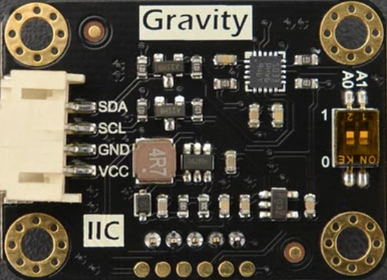
 Design with Electrochemical Ozone / O3 Sensor (0-10 ppm, I2C) in Cirkit Designer
Design with Electrochemical Ozone / O3 Sensor (0-10 ppm, I2C) in Cirkit DesignerIntroduction
The Gravity Electrochemical Ozone Sensor (SEN0321) is a high-precision sensor designed to measure ozone (O3) concentration in the air. It operates within a range of 0 to 10 ppm and communicates via the I2C protocol, making it easy to integrate into microcontroller-based systems. This sensor is ideal for applications requiring accurate ozone monitoring, such as environmental monitoring, industrial safety, and air quality control.
Explore Projects Built with Electrochemical Ozone / O3 Sensor (0-10 ppm, I2C)
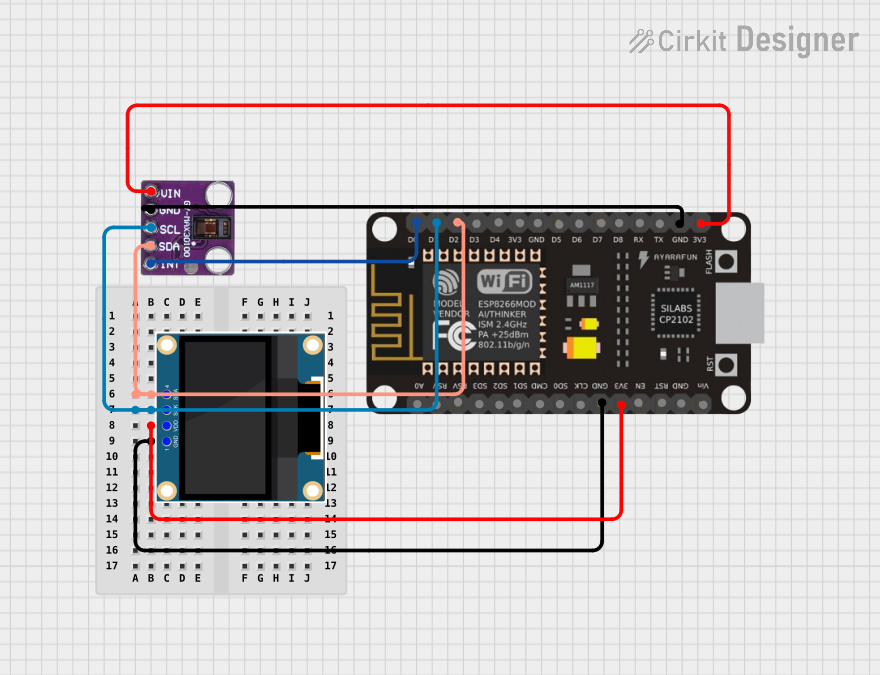
 Open Project in Cirkit Designer
Open Project in Cirkit Designer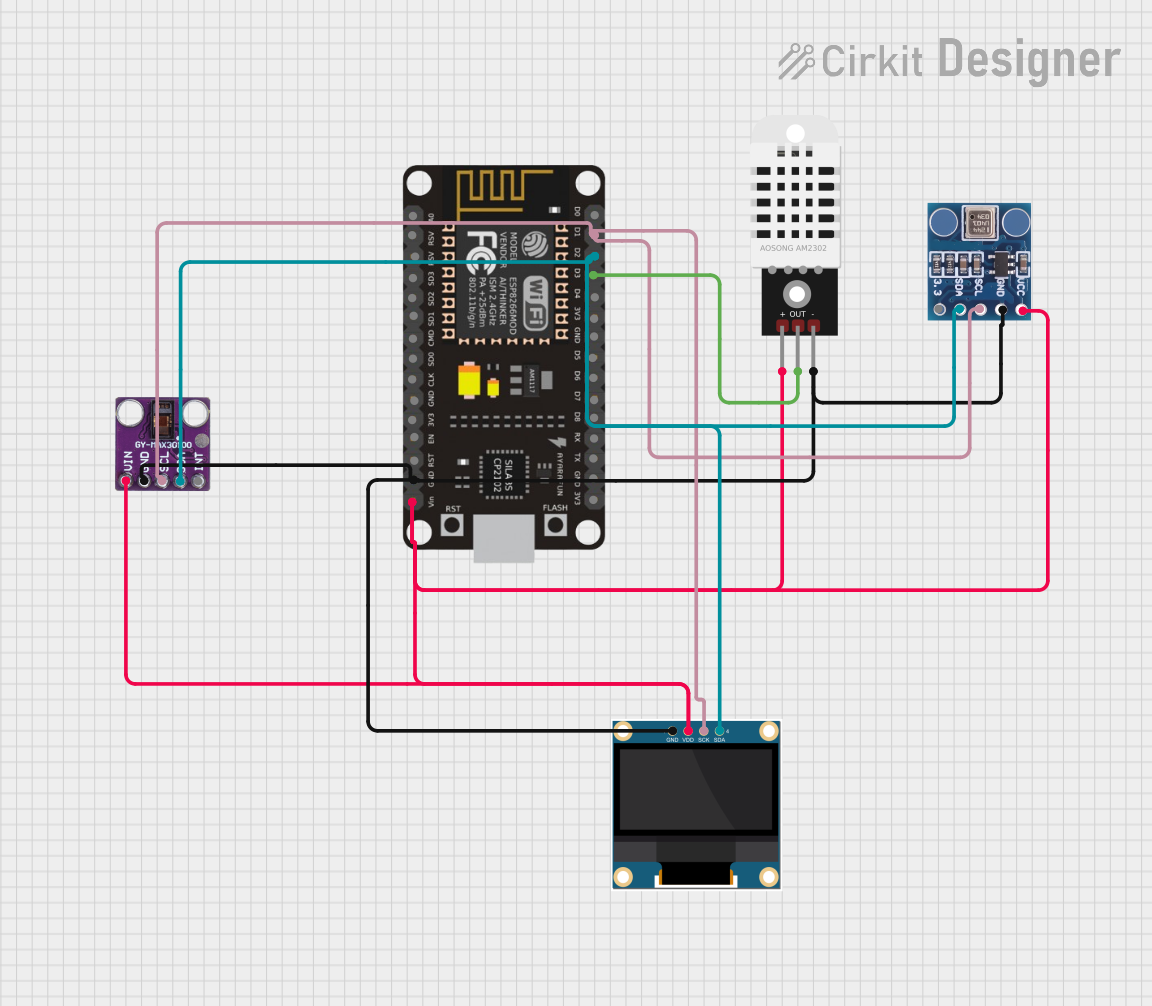
 Open Project in Cirkit Designer
Open Project in Cirkit Designer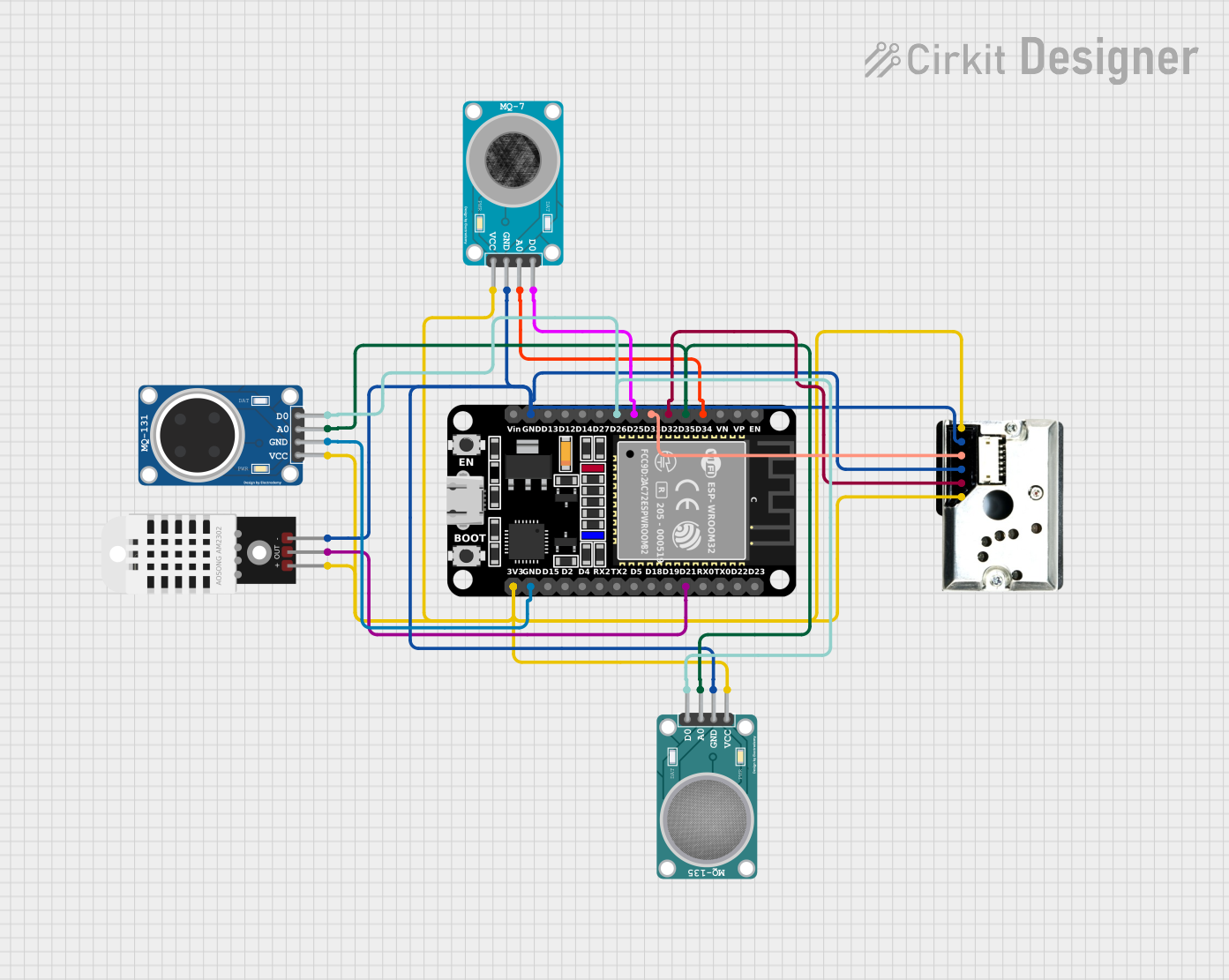
 Open Project in Cirkit Designer
Open Project in Cirkit Designer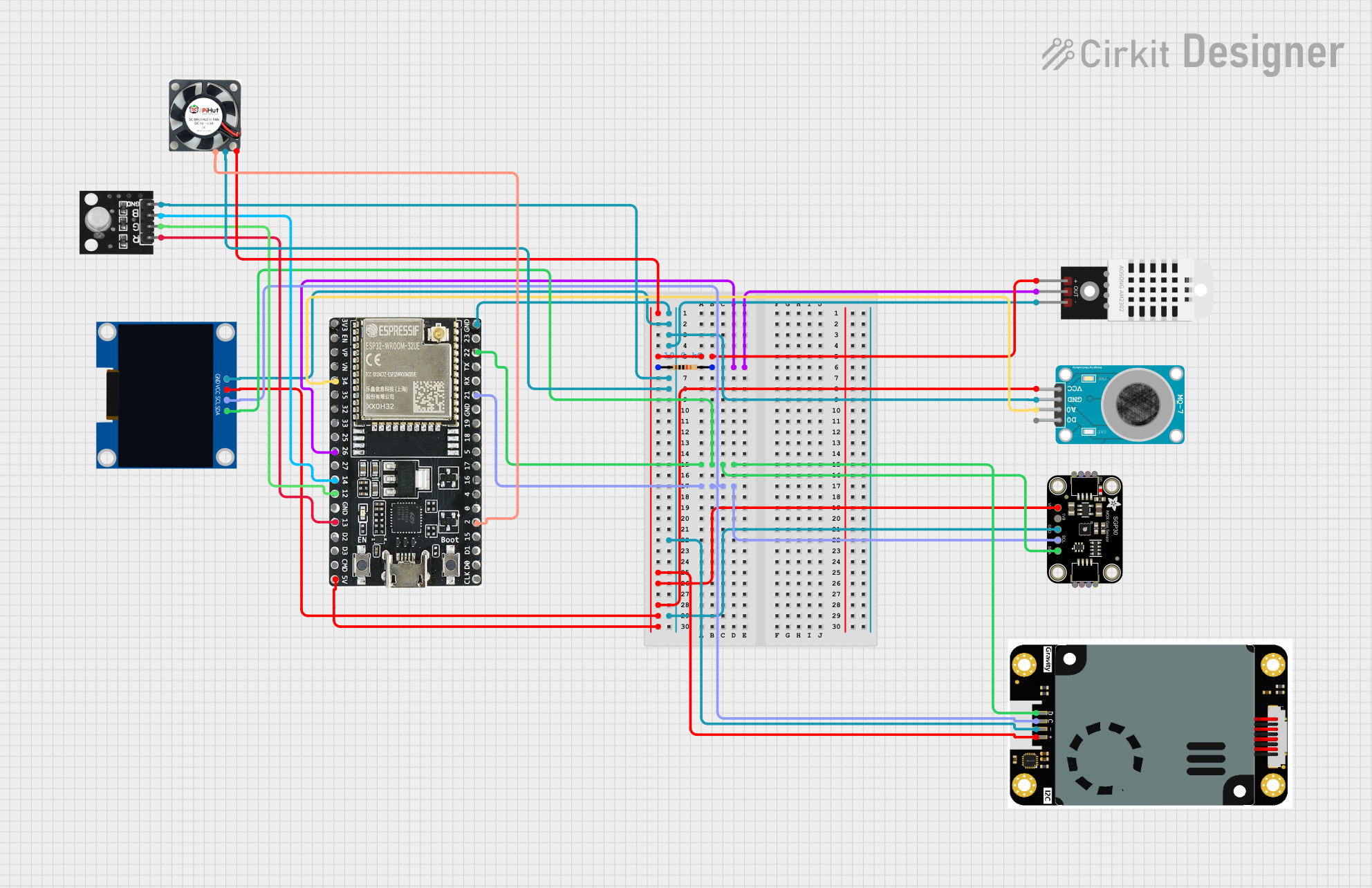
 Open Project in Cirkit Designer
Open Project in Cirkit DesignerExplore Projects Built with Electrochemical Ozone / O3 Sensor (0-10 ppm, I2C)

 Open Project in Cirkit Designer
Open Project in Cirkit Designer
 Open Project in Cirkit Designer
Open Project in Cirkit Designer
 Open Project in Cirkit Designer
Open Project in Cirkit Designer
 Open Project in Cirkit Designer
Open Project in Cirkit DesignerCommon Applications
- Air quality monitoring systems
- Industrial safety and hazard detection
- Environmental research and analysis
- Smart home and IoT devices for pollution detection
Technical Specifications
The following table outlines the key technical details of the Gravity Electrochemical Ozone Sensor:
| Parameter | Specification |
|---|---|
| Measurement Range | 0 to 10 ppm |
| Resolution | 0.01 ppm |
| Accuracy | ±(2% of reading + 0.1 ppm) |
| Operating Voltage | 3.3V to 5.5V |
| Operating Current | < 5 mA |
| Communication Interface | I2C |
| I2C Address (Default) | 0x73 |
| Operating Temperature | -20°C to 50°C |
| Operating Humidity | 15% to 90% RH (non-condensing) |
| Sensor Lifetime | > 2 years (under normal conditions) |
Pin Configuration and Descriptions
The sensor has a 4-pin interface for power and communication. The pinout is as follows:
| Pin | Name | Description |
|---|---|---|
| 1 | VCC | Power supply input (3.3V to 5.5V) |
| 2 | GND | Ground |
| 3 | SDA | I2C data line |
| 4 | SCL | I2C clock line |
Usage Instructions
Connecting the Sensor
- Power Supply: Connect the VCC pin to a 3.3V or 5V power source and the GND pin to ground.
- I2C Communication: Connect the SDA and SCL pins to the corresponding I2C pins on your microcontroller (e.g., Arduino UNO: A4 for SDA, A5 for SCL).
- Pull-Up Resistors: Ensure that the I2C bus has pull-up resistors (typically 4.7kΩ) on the SDA and SCL lines if not already present.
Arduino UNO Example Code
Below is an example of how to interface the sensor with an Arduino UNO to read ozone concentration:
#include <Wire.h>
// I2C address of the Ozone Sensor
#define OZONE_SENSOR_ADDR 0x73
void setup() {
Serial.begin(9600); // Initialize serial communication
Wire.begin(); // Initialize I2C communication
Serial.println("Ozone Sensor Initialization...");
}
void loop() {
float ozoneConcentration = readOzoneConcentration();
if (ozoneConcentration >= 0) {
Serial.print("Ozone Concentration: ");
Serial.print(ozoneConcentration);
Serial.println(" ppm");
} else {
Serial.println("Error reading ozone concentration.");
}
delay(1000); // Wait 1 second before the next reading
}
// Function to read ozone concentration from the sensor
float readOzoneConcentration() {
Wire.beginTransmission(OZONE_SENSOR_ADDR);
Wire.write(0x03); // Command to request ozone concentration
if (Wire.endTransmission() != 0) {
return -1; // Return error if communication fails
}
delay(100); // Wait for the sensor to process the request
Wire.requestFrom(OZONE_SENSOR_ADDR, 2); // Request 2 bytes of data
if (Wire.available() == 2) {
uint8_t highByte = Wire.read(); // Read the high byte
uint8_t lowByte = Wire.read(); // Read the low byte
return ((highByte << 8) | lowByte) / 100.0; // Convert to ppm
} else {
return -1; // Return error if data is unavailable
}
}
Important Considerations
- Warm-Up Time: Allow the sensor to warm up for at least 5 minutes after powering on for accurate readings.
- Calibration: The sensor is factory-calibrated, but periodic calibration may be required for long-term accuracy.
- Environmental Conditions: Avoid exposing the sensor to extreme temperatures, humidity, or corrosive gases, as these can affect its performance and lifespan.
- I2C Address Conflicts: If multiple I2C devices are connected, ensure that their addresses do not conflict. The default address of this sensor is 0x73.
Troubleshooting and FAQs
Common Issues and Solutions
No Data from Sensor
- Cause: Incorrect wiring or I2C address mismatch.
- Solution: Verify the connections and ensure the I2C address in the code matches the sensor's address.
Inaccurate Readings
- Cause: Insufficient warm-up time or environmental interference.
- Solution: Allow the sensor to warm up for at least 5 minutes and ensure it is used in a stable environment.
I2C Communication Errors
- Cause: Missing pull-up resistors or incorrect I2C pin connections.
- Solution: Add 4.7kΩ pull-up resistors to the SDA and SCL lines if not already present. Double-check the wiring.
Sensor Not Detected
- Cause: Faulty sensor or incorrect power supply voltage.
- Solution: Ensure the sensor is powered with 3.3V to 5.5V and check for physical damage.
FAQs
Q1: Can this sensor detect ozone concentrations above 10 ppm?
No, the sensor is designed to measure ozone concentrations within the range of 0 to 10 ppm. Exceeding this range may damage the sensor or result in inaccurate readings.
Q2: How often should the sensor be calibrated?
Under normal conditions, the sensor does not require frequent calibration. However, for critical applications, calibration every 6 months is recommended.
Q3: Can this sensor be used outdoors?
Yes, but it should be protected from direct exposure to rain, extreme temperatures, and high humidity to ensure reliable operation.
Q4: Is the sensor compatible with 3.3V microcontrollers?
Yes, the sensor operates with both 3.3V and 5V logic levels, making it compatible with a wide range of microcontrollers.
By following this documentation, users can effectively integrate and utilize the Gravity Electrochemical Ozone Sensor (SEN0321) in their projects.